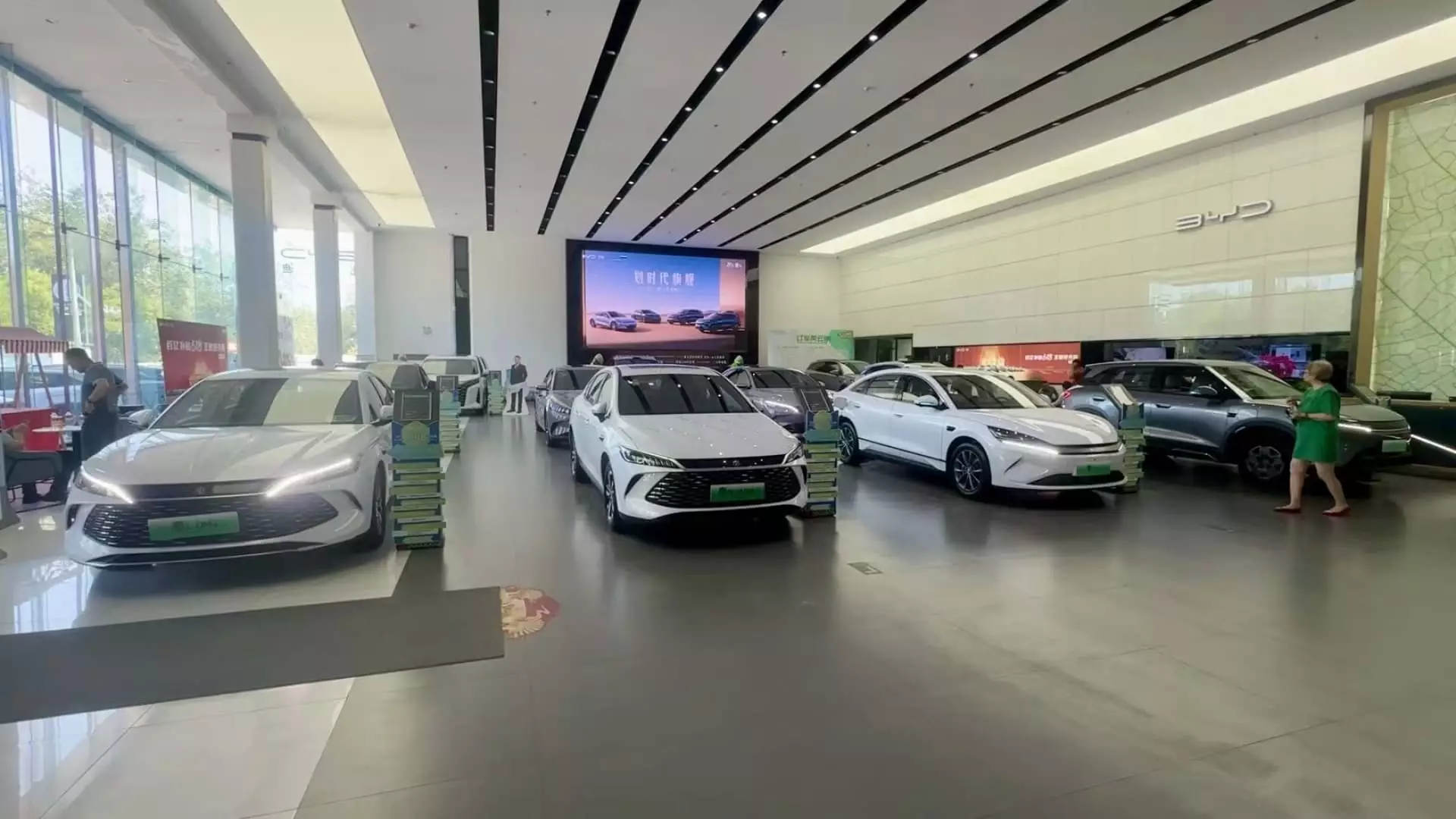The electric vehicle (EV) market in China, once the beacon of hope for sustainable transportation and technological innovation, now finds itself embroiled in a dangerous price war, a race that could lead it to a precarious “race to the bottom.” Salesmen like Ma Hui, operating in the bustling used car markets of Beijing, voice a sentiment echoing across the industry: the relentless pressure of competition is not only unsustainable but detrimental to profits and livelihoods. As he articulates the plight of used car operators, it becomes increasingly clear that the seismic shifts in pricing strategies orchestrated by leading manufacturers are wreaking havoc across a broad spectrum of the automotive ecosystem.
China’s EV scene, spearheaded by BYD, is quickly spiraling into chaos where the lines between innovation and survival blur. It’s alarming to witness industry leaders slashing prices—some models seeing cuts of up to 34%. This aggressive pricing strategy, exemplified by BYD’s now-affordable Seagull mini hatchback, raises questions about long-term viability. Are we witnessing a calculated strategy to dominate market share at the expense of profitability, or has desperation taken the wheel? The challenges that stir beneath the surface are powerful enough to challenge the very foundation of this once-celebrated industry.
The Underbelly of Competition
What’s even more troubling is the emerging consensus that this “price war” has consequences that extend far beyond the balance sheets of manufacturers. Commentary from the People’s Daily, a mouthpiece of the Communist Party, has starkly warned that such disorderly competition poses a dire threat to income stability for countless workers across the supply chain. As profits dwindle, the ramifications ripple outward, jeopardizing the livelihoods dependent on a thriving automotive sector.
The concern is palpable, especially considering how parallels are being drawn between today’s automotive crisis and the infamous collapse of China’s property sector, illustrated by the catastrophic fall of the Evergrande Group. Such analogies aren’t just alarmist rhetoric; they serve as a grim reminder that industries can plunge from great heights to disarray in mere moments. As the warning sirens grow louder, executives like Wei Jianjun of Great Wall Motor are not shy about projecting an impending catastrophe unless corrective action is taken soon.
A Call for Balanced Competition
Meanwhile, the call from government-supported industry groups for a moratorium on “dumping” vehicles below production costs is another crucial step toward curbing this self-defeating behavior. While manufacturers like BYD frame their strategies as progressive competition, the reality reflects a chaotic environment where panic, rather than calculated strategy, drives decision-making. The market’s current trajectory paints a dismal picture that ought to concern regulators and policymakers alike.
In an ordinary market, competition breeds innovation and efficiency; however, China’s EV space seems to be evolving into a dystopian landscape where desperate measures come to dominate. Such a climate not only threatens the profitability of established brands but also risks stifling innovation. When every dollar is fought for ferociously, there’s less room for the kind of R&D investments that might propel the industry forward in a sustainable manner.
The Consumer’s Dilemma
Consumers are not exempt from the repercussions of this pricing turmoil. Ma Hui sagely points out how price slashing instills a sense of hesitation among potential buyers who may now decide to wait for even lower prices. The resultant culture of indecision could stagnate sales further and push the industry closer to a financial cliff. As trust in long-term value diminishes, so too does consumer engagement.
It’s also worth noting how this phenomenon introduces an alarming trend called “zero mileage used cars,” where vehicles are registered but never driven, artificially inflating sales figures. This kind of manipulation complicates an already nuanced market landscape and underscores the potential for widespread deception amidst declining consumer confidence.
The intertwined fates of manufacturers and sellers evoke a sobering reality—a sobering reminder that the race for dominance, if unchecked, can lead to outcomes that hurt everyone involved. It dismantles the façade of progress that electric vehicles promised, ultimately tarnishing an industry that held the future in its hands.

